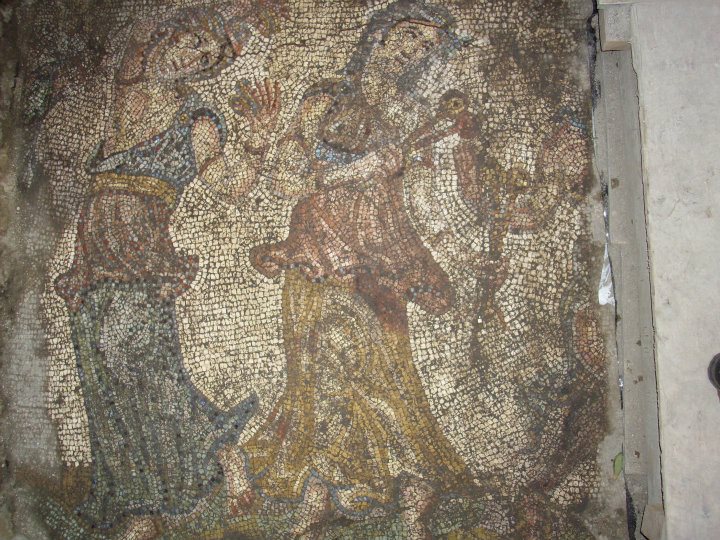Archaeologists have found an intricate Roman-era mosaic floor in the southern Bulgarian town of Stara Zagora. According to Dimitar Yankov, chief curator of Stara Zagora’s Regional Museum of History and leader of the archaeological team, the mosaic dates to around the 3rd century A.D. and nothing like it has been found in Bulgaria before. The scene is a Bacchanalian revel and thus far the figure of Semele, Bacchus’ mortal mother, and two dancing women have been revealed. Semele is leading the revels and the dancing women follow her.
“The complex figures of dancing women suggest the mosaic was done by a great master. The clothes are in five shades of blue and the red color varies from pink to dark red. The figures are very fine. One of the women holds castanets in her hands and the other one holds other music instruments. The folds of their clothes suggest their knees are bent. Their ankles are bare and their legs move. There is play of light and shade.”
The building in which the mosaic was found was a temple to Bacchus located a hundred feet from the walls of the ancient forum. Yankov hopes that more of the mosaic remains and that continuing excavations will reveal the god Bacchus himself.
Restorer Nikola Stoyanov notes that the mosaic was created using the opus tessellatum technique where the mosaic tiles (tesserae) in the background are laid out so they align either vertically or horizontally, but not both. The tesserae are just one centimeter square, which give the mosaic its complexity and detail, but will also ensure that any future attempts to remove the mosaic for conservation and display will be an enormous challenge.
It has to happen, though, because the property being excavated is privately owned. In order to ensure that the mosaic is preserved and shown to the public, somebody is going to have to peel thousands of one-centimeter tiles off the floor.
